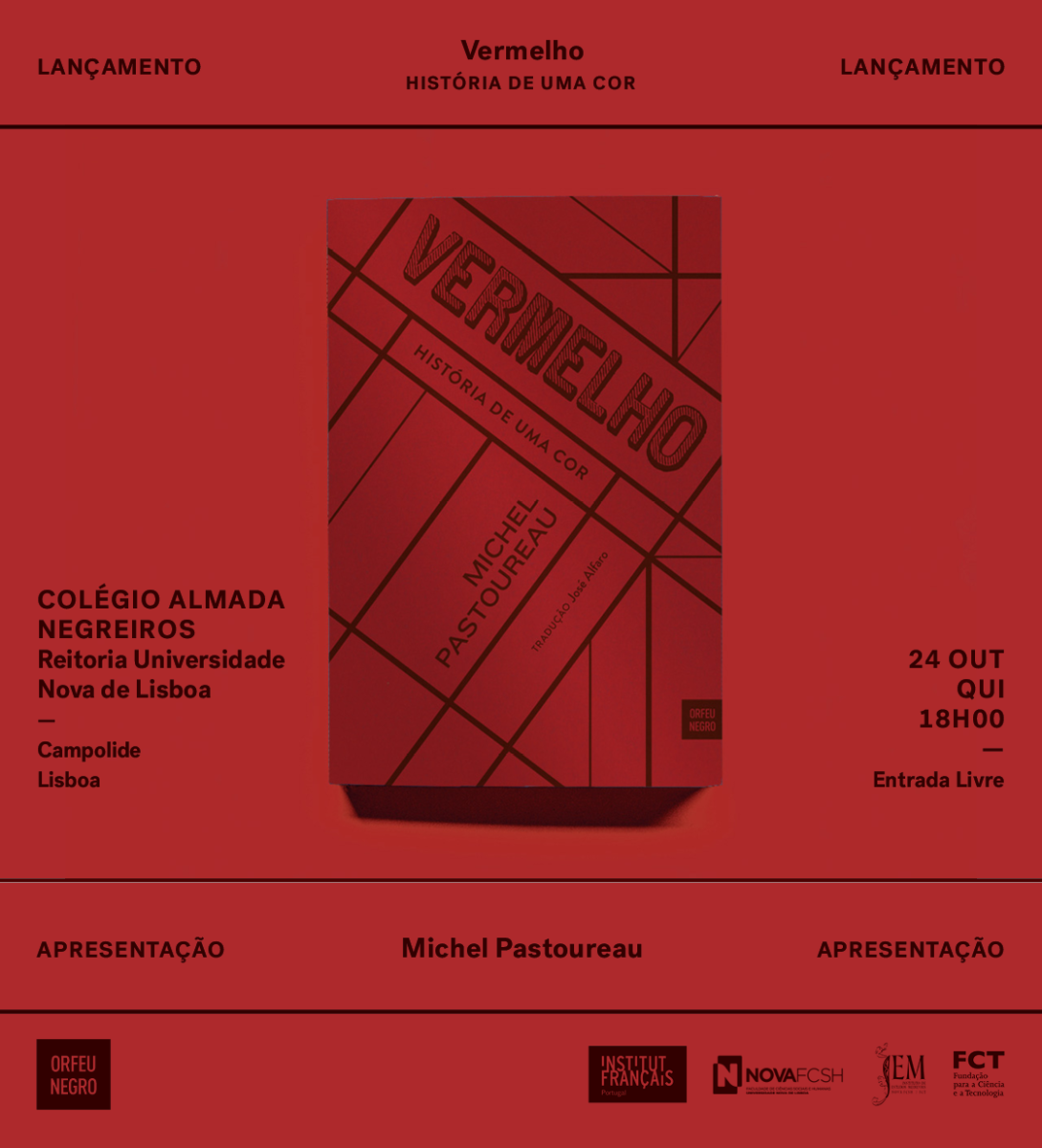Conference and book launch: Livro Vermelho – História de uma Cor
24.10.2019 | 18:00 - 20:00
NOVA FCSH, Colégio Almada Negreiros

No color compares to red; It is the archetypal color, the first to be dominated and reproduced by humanity in wall paintings and body adornments. Linked to fire and blood since ancient times, red unfolds in a particularly fruitful and ambivalent chromatic labyrinth: the color of the Grail and love in chivalric romances, the color of Little Red Riding Hood, it will also be the color of the outcasts, of the forces of evil , indicating dangers and restrictions. Marginalized by Newton and disowned by the Protestant Reformation, red loses its status as the first color and becomes too showy, and even immoral. It will remain, however, as the color of eroticism, joy and revolution.
“This is the paradox of red, which is no longer our favorite color, which is becoming increasingly discreet in our daily lives, which in many fields is surpassed by blue, perhaps even by green, but which continues to be symbolically the most strong. A strange fate for a color that comes from so far away and is so full of meanings, legends and dreams!”
About the author:
Michel Pastoreaux, French historian, is one of the greatest experts in the symbolism of colors and heraldry. Director of studies at the École Pratique des Hautes Études, where he holds the chair of Western Symbolic History, he received, in 2010, the Médicis Prize for essay, with Les Couleurs de nos souvenirs. He published several works dedicated to the history of colors, animals and symbols, namely Preto, Azul e Verde, published in Portugal by Orfeu Negro editions.
